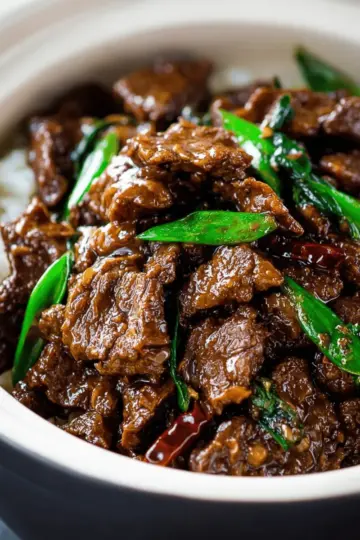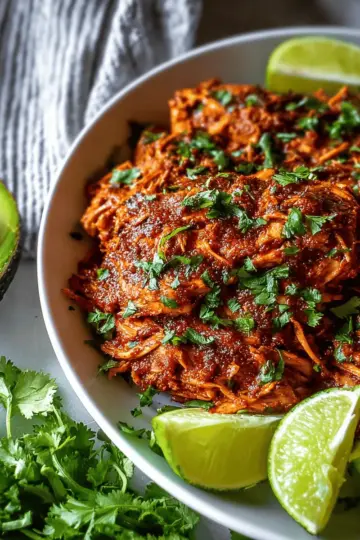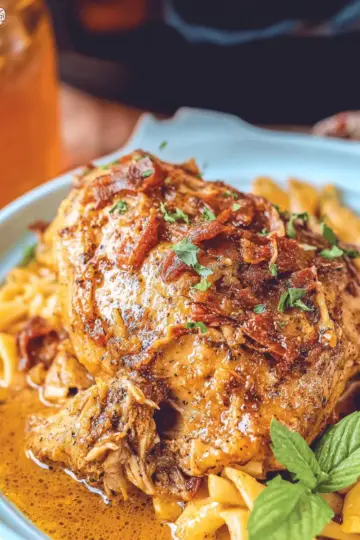Introduction to Pinsa Romana Recipe
The Origins of Pinsa Romana
Pinsa Romana hails from the ancient streets of Rome and has roots that date back over 2,000 years. Originally, the Romans crafted this delicious flatbread using a blend of different flours, including spelt and rice, giving it a unique flavor and texture. The name “pinsa” is derived from the Latin word “pinsere,” which means “to stretch or flatten.” Traditionally, this bread was made by the lower class due to its simpler ingredients and was often topped with just a drizzle of olive oil and herbs. Today, it has found its way into gourmet kitchens and pizzerias around the globe, enjoyed for its crispy exterior and airy, digestible inside.
Why You Should Try Making Pinsa at Home
Have you ever wanted to impress friends with your culinary skills? Making Pinsa Romana at home is not only rewarding but also fun! The dough is surprisingly easy to work with, and with some key ingredients and proper fermentation, you can achieve a restaurant-quality dish right in your kitchen. Home-baking allows you to personalize your toppings—think fresh vegetables, gourmet cheeses, or even spicy turkey bacon. Plus, the process becomes a delightful adventure, perfect for a weekend cooking project or a cozy gathering with friends. Ready to get started? Let’s dive into the full Pinsa Romana Recipe.

Ingredients for Pinsa Romana
Creating the perfect Pinsa Romana starts with the right ingredients. This unique Roman flatbread combines different flours to achieve its distinctive texture and flavor. Below, we break out the essentials so you can recreate this delightful dish at home.
Essential Ingredients for the Dough
To achieve that wonderful light and airy crust, focus on these key ingredients for the dough:
- 500 g Italian 00 flour: This finely milled flour gives the best texture.
- 50 g rice flour: Adds a unique flavor and crispness.
- 40 g spelt flour: A nutritious alternative that contributes to the dough's structure.
- 460 ml ice-cold water: Cold water helps develop gluten without overworking the dough.
- 2.5 g active dry yeast: This is crucial for the fermentation process.
- 10 g salt: Enhances flavor and strengthens the gluten.
- 5 ml extra virgin olive oil: Adds richness to the dough.
- Semolina flour: Used for dusting the surface when rolling out the dough.
Common Toppings for Pinsa
Once you’ve mastered the dough, it's all about toppings! Here are some delicious combinations to elevate your Pinsa Romana Recipe:
- Margherita: Tomato sauce, fresh mozzarella, and basil leaves.
- Diavola: Tomato sauce, mozzarella, spicy salami, and chili flakes.
- Quattro Formaggi: A blend of mozzarella, gorgonzola, parmesan, and provolone.
- Prosciutto e Funghi: Tomato sauce, mozzarella, chicken ham, and mushrooms.
- Vegetariana: Summer vegetables like grilled zucchini, eggplant, and bell peppers.
- Boscaiola: Tomato sauce, mozzarella, beef sausage, mushrooms, and a touch of truffle oil.
- Capricciosa: A savory medley with artichokes, chicken ham, mushrooms, and olives.
- Burrata and Mortadella: Fresh burrata added after baking for a creamy finish.
Experimenting with toppings allows you to create a Pinsa Romana that suits your palate perfectly. Enjoy the process of making, topping, and sharing this delightful dish!
Step-by-Step Preparation of Pinsa Romana
Creating your own Pinsa Romana at home might feel like a culinary challenge, but with this step-by-step guide, you'll find it enjoyable and rewarding. Ready to impress your friends and family? Let’s dive in!
Mixing the Dough
Start by gathering your ingredients: you’ll need a mix of Italian 00 flour, rice flour, spelt flour, and some basic pantry staples like active dry yeast, salt, and olive oil. In a large bowl or your stand mixer, combine the flours with the yeast, whisking it all together. Here’s a pro tip: gradually add ice-cold water in three increments. It might seem tricky that your dough appears dry at first, but stick with it! In the last addition, mix in the salt and olive oil. Knead it for about 12 minutes — either by hand or using the dough attachment. Your reward will be a smooth, slightly sticky dough.
Stretch and Fold Technique
Once you've finished kneading, it’s time for the stretch and fold technique. Using a spatula, stretch the dough over itself a few times — this helps develop gluten, leading to a delightful texture. After that, cover the dough and let it rise until it doubles in size, which takes about an hour. Repeat the stretch and fold, shape it into a ball, and transfer it to a lightly oiled bowl. Cover it nicely and allow it to cold ferment in the refrigerator for 24-48 hours.
Shaping the Dough
When you’re ready to make your Pinsa, it’s time to get shaping! Preheat your oven to its highest setting, around 250-280°C (480-550°F), and if you have a pizza stone, place it inside. Divide your risen dough into 2-3 portions based on how big you want your Pinsa. Gently coil each piece into a ball, dust it with semolina flour, and let it rest for 15-30 minutes on a baking sheet.
On a clean, semolina-floured surface, carefully stretch each dough ball into an oval shape. Use your hands to gently pull the dough, allowing gravity to assist. Dimple the surface with your fingers for that characteristic Pinsa texture.
Preparing the Oven
Your oven should be hot by now! If you have a pizza stone, ensure it’s sufficiently heated — this will give your Pinsa that lovely crispiness. If you’re using a baking sheet instead, make sure it’s lightly oiled to prevent sticking.
Baking Your Pinsa
Place your stretched dough onto the hot stone or your prepared baking sheet. Now comes the fun part: add your chosen toppings! Whether you prefer a classic Margherita with tomato sauce, fresh mozzarella, and basil, or something creative like Burrata and Mortadella with pistachios, this is where you can really let your culinary creativity shine. Remember, less is more when it comes to toppings; otherwise, you risk weighing down the dough.
Bake for 10-12 minutes, or up to 20 minutes if heavily topped, until the crust is a beautiful golden brown. Once done, cut it gently with scissors or a serrated knife to preserve that airy texture. Enjoy your homemade Pinsa Romana with friends, family, or just a cozy night in!

Variations on Pinsa Romana
Exploring variations on your Pinsa Romana Recipe can elevate your pizza night to new heights!
Seasonal Vegetable Pinsa
Embrace the bounty of each season by topping your pinsa with fresh, seasonal vegetables. Think vibrant zucchini, sweet bell peppers, or earthy mushrooms. A drizzle of extra virgin olive oil and a sprinkle of sea salt will enhance their natural flavors, making each bite a burst of freshness. Customize it with your favorite seasonal greens, and experiment with different herbs to find the perfect match for your taste buds.
Mediterranean Pinsa
For a taste of the Mediterranean, try a combination of classic ingredients like feta cheese, black olives, sun-dried tomatoes, and artichoke hearts. This delightful mix transports you straight to sun-drenched shores! Add a handful of arugula right after baking for a peppery kick, pairing beautifully with the rich flavors of your toppings. Check out more tips on Mediterranean-inspired flavors here.
Give these variations a try and let your creativity shine!
Cooking Tips and Notes for Pinsa Romana
Handling Sticky Dough
When preparing your Pinsa Romana recipe, you might feel tempted to add more flour to that sticky dough. Resist! This stickiness is an indicator of hydration, which contributes to the dough's wonderfully airy texture. Instead, use a rubber spatula for stretching and folding the dough, helping to develop gluten without sacrificing moisture.
Tips for a Crispy Crust
For that perfect crispy crust, make sure your oven is preheated to its highest temperature, ideally around 250-280°C (480-550°F). If you've got one, use a pizza stone to retain heat and mimic a traditional pizza oven. Additionally, sprinkle a bit of semolina flour on your baking surface to keep your Pinsa from sticking and ensure a delightful crunch!

Serving Suggestions for Pinsa Romana
Pairing with Dips and Salads
Liven up your Pinsa Romana experience by pairing it with flavorful dips and refreshing salads. Consider serving a tangy tzatziki or a warm hummus for a delightful contrast. Fresh salads, like a simple arugula and cherry tomato mix dressed in olive oil and lemon juice, can add a crisp element. Incorporating elements like roasted red peppers or olives can elevate the flavors further, making your meal a true feast.
Creative Presentation Ideas
The way you present your Pinsa Romana Recipe can enhance the overall dining experience. Try cutting it into smaller pieces and serving on a rustic wooden board for a shared experience, or stack the slices vertically for a fun display. Adding fresh herbs like basil or parsley as a garnish not only looks appealing but also brings an aromatic touch that accentuates the flavors. Don't forget to drizzle a bit of olive oil before serving to invite a lush finish.
Time Breakdown for Pinsa Romana
Understanding the timing for your Pinsa Romana Recipe can be crucial for achieving that perfect crust and flavor. Here’s a helpful breakdown to keep your cooking experience smooth and enjoyable:
Preparation Time
Get ready to roll! The initial mixing and kneading of the dough typically takes about 20-25 minutes. This includes combining your flours, adding water, and kneading until smooth.
Rising Time
Patience is key! After kneading, allow your dough to rise for approximately 1 hour to double in size. For even better flavor, refrigerate for 24-48 hours for that cold fermentation magic.
Baking Time
When the moment arrives to bake, preheat your oven and expect about 10-12 minutes for a plain Pinsa. If you’re adding toppings, anticipate up to 20 minutes for optimal crispiness.
Total Time
From start to finish, including preparation, rising, and baking, you’ll be looking at approximately 24-49 hours and 35 minutes (considering fermentation), making this a great weekend project for you and your friends!
This simple guide will help ensure your Pinsa Romana turns out beautifully every time. Happy baking!
Nutritional Facts for Pinsa Romana
Calories per Serving
A serving of Pinsa Romana is approximately 1106 calories. When shared among 2-3 people, it's a deliciously indulgent option for gatherings.
Macronutrient Breakdown
Dive into the nutritious side of this delightful dish:
- Carbohydrates: 226g
- Protein: 30g
- Fat: 6g
- Saturated Fat: 1g
- Polyunsaturated Fat: 1g
- Monounsaturated Fat: 2g
- Fiber: 10g
For added dietary insights, check out sources like Nutrition.gov and Mayo Clinic. Embrace the flavors of this Pinsa Romana recipe, balancing taste and nutrition effortlessly!
FAQ about Pinsa Romana Recipe
How long can I store Pinsa dough?
You'll be pleased to hear that Pinsa dough can be stored in the fridge for up to 48 hours after its initial rise. This cold fermentation process enhances the flavor and texture. Just remember to cover it well to prevent drying out. If you want to keep it even longer, consider freezing the dough for up to three months. When you're ready to use it, just thaw in the fridge overnight and let it come to room temperature before baking.
Can I use regular flour instead of 00 flour?
While you can substitute regular flour, using Italian 00 flour gives your Pinsa the unique texture and flavor it’s known for. This finely milled flour helps achieve that delightful, airy crust. If you can't find it, a mix of all-purpose flour with a bit of bread flour can work in a pinch, but the results may slightly differ.
What are some popular toppings for Pinsa?
When it comes to toppings, the possibilities are endless! Here are a few crowd-pleasers:
- Margherita: Tomato sauce, fresh mozzarella, and basil.
- Diavola: Tomato sauce, mozzarella, spicy salami, and chili flakes.
- Quattro Formaggi: Mozzarella, gorgonzola, parmesan, and provolone for cheese lovers.
- Burrata and Mortadella: Add after baking, topped with pistachios for extra flavor.
Feel free to get creative!
Conclusion on Pinsa Romana Recipe
The Joy of Homemade Pinsa
Making your own Pinsa Romana at home is a rewarding culinary adventure. The unique texture and flavor achieved through the use of different flours and a slow fermentation process means you're not just cooking—you're creating. Each bite of crispy, airy crust brings a taste of Italy right into your kitchen.
Encouragement to Experiment in the Kitchen
Don't hesitate to play with toppings and ingredients! The beauty of this Pinsa Romana recipe lies in its versatility. Whether you prefer classics like Margherita or adventurous combinations, let your creativity shine. With practice, you’ll find your perfect balance, so grab those aprons and start experimenting!

Pinsa Romana Recipe
Equipment
- Stand mixer
- Baking Sheet
- pizza stone
- Rubber Spatula
Ingredients
For the Dough
- 500 g Italian 00 flour
- 50 g rice flour
- 40 g spelt flour or soy flour
- 460 ml ice cold water
- 2.5 g active dry yeast
- 10 g salt
- 5 ml extra virgin olive oil
- Semolina flour for rolling out dough
Instructions
Mixing the Dough
- In a large bowl or bowl of a stand mixer, combine all the flours with the yeast and whisk to combine.
- Gradually add the cold water in three additions (about 100 gr each time), mixing well after each time.
- In the last addition of water, add the salt and olive oil, mixing until the dough starts to come together. Knead for about 12 minutes until smooth and elastic.
Stretch and Fold
- After kneading the dough, take a rubber spatula and stretch and fold it over itself several times to develop gluten.
- Cover and let the dough rest until it doubles in size (about 1 hour), then repeat the stretch and fold process and form it into a new dough ball.
- Place in a clean and lightly oiled bowl, cover with plastic wrap, and refrigerate for 24-48 hours for cold fermentation.
Shaping and Baking
- Preheat your oven to its highest setting (around 250-280°C or 480-550°F) with a pizza stone inside if you have one.
- Divide the dough into 2-3 portions and shape them into dough balls. Sprinkle with semolina flour, cover with plastic wrap, and let them rest for 15-30 minutes.
- Sprinkle semolina flour on a clean surface and gently stretch each dough ball into an oval shape, dimpling it with your fingers.
- Transfer the dough to an oiled baking sheet or pizza peel sprinkled with semolina.
- Add your desired toppings and bake for 10-12 minutes until the crust is golden brown and crispy.





Leave a Reply